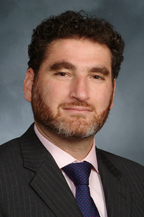September 19, 2016

Physicians at Weill Cornell Medicine continue to look for new ways to improve national organ allocation for liver transplantation. In an article published in the January 2016 edition of the American Journal of Transplantation, lead author Dr. Karim J. Halazun argues that the new liver allocation policy instituted by the United Network for Organ Sharing (UNOS) in 2013, known as Share 35, is not improving outcomes equally in all regions.
Implemented in June of 2013, the intent of the Share 35 policy was to reduce geographic disparities for liver transplantation that existed after the implementation of model for end-stage liver disease (MELD) scores in 2002. Before 2013, MELD score plus blood type determined the distribution of organs for transplantation, and organs were often shared locally. After the implementation of Share 35, patients in a UNOS geographic region (spanning multiple states) with a MELD score greater than 35 were effectively placed on one shared list, prioritizing and expediting transplants to these very sick patients. Organs that would stay local to a specific metro area may travel elsewhere in a region if the patient’s score was greater than 35.
When comparing pre-Share 35 and post-Share 35 outcomes data on a national level, Dr. Halazun and his colleagues found no overall difference in survival, despite concerns in the transplant community that survival would decrease. However, when post-transplantation survival was compared by UNOS region, it appears that regional variation in survival persisted in the year after Share 35 world despite broader sharing. Notably, UNOS regions 4 (Texas and Oklahoma) and 10 (Ohio, Michigan and Indiana) had higher mortality after Share 35 was implemented. Dr. Halazun and his fellow authors conclude that Share 35 has not had a negative impact nationally, but express concerns that geographical disparities remain in certain regions.
This work comes in the wake of Dr. Halazun’s previous study in Hepatology on UNOS prioritization of patients with hepatocellular carcinoma (HCC) for liver transplantation. In the 2014 paper, Halazun and his fellow researchers compared the outcomes of 6,160 patients with HCC awaiting liver transplantation in geographic regions with long wait times for transplant (New York and California) versus those with short wait times (Ohio, Michigan and Indiana). HCC patients were generally prioritized on transplant waiting lists through the mechanism of MELD exceptions. The difference in wait times is due to geographic disparities of organ supply, leading to significant differences in waiting times for transplant (median of 1.6 months in Ohio, Michigan and Indiana v 7.6 months in New York and California)
Dr. Halazun’s analysis concluded that HCC patients who received transplants in short wait time regions actually fared worse after transplant than those who waited longer for transplant. This is thought largely to be due to the rapid transplant of patients with unfavorable tumor biology in the short-wait time regions. As a direct result of this work, new national UNOS criteria for MELD score exception points for HCC were adopted in October 2015. These changes took the form of a waiting period of 6 months prior to award of any MELD score exception points. Dr. Halazun was award the American Society of Transplant Surgeons Vanguard Award in January 2015 for his work.



